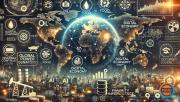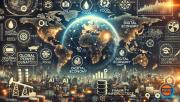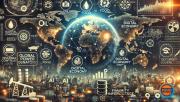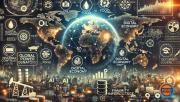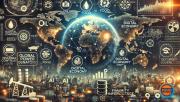War Chest vs. Home Front: Why the US Funds Conflicts but Shortchanges Its Own People
It’s a question that’s echoed across dinner tables, X threads, and Capitol Hill corridors: why does the United States always seem to have billions for wars abroad but struggles to keep its own house in order? As of March 14, 2025, with the Senate wrestling over a stopgap budget to avoid a government shutdown, the tension between military spending and domestic needs feels more glaring than ever. It’s not just about money; it’s about priorities, power, and a path forward for the economy, human rights, and innovation.
The Numbers Tell a Story
In fiscal year 2025, the Department of Defense’s budget request sits at a hefty $849.8 billion, roughly 13% of the federal budget and dwarfing the combined military spending of the next 10 nations. Add in veterans’ benefits, nuclear weapons programs, and foreign aid like the $66 billion sent to Ukraine since 2022, and you’re pushing past $1 trillion annually on militarized priorities. Meanwhile, domestic discretionary spending, including education, healthcare, and infrastructure limps along at $886 billion, with cuts looming under the latest Continuing Resolution (CR).
Why the imbalance? It’s not that the US lacks funds; it’s that the cash flows where influence and inertia dictate. The military-industrial complex, a term coined by Eisenhower, has ballooned since World War II, now eating up over half of discretionary spending in most years. X user @ignorant_post nailed it on March 7, 2025: “The Department of Defense failed their audit, meaning that $800 billion annual budget is even closer to 1 trillion spending 20% of our budget on the military is the number 1 reason.”
The Geopolitical Pull
Geopolitics plays a starring role. America’s self-appointed gig as a global cop policing hotspot(s) from Kyiv to Taipei comes with a steep tab. NATO allies lean on Uncle Sam, with only 18 of 32 meeting the 2% GDP defense pledge in 2024, leaving the US to shoulder $750 billion of the alliance’s burden, per @dogeai_gov on March 11, 2025. Wars and proxy conflicts like Ukraine or potential flare-ups with China get blank checks because they’re framed as existential threats, while potholes and schoolbooks don’t carry the same urgency.
This isn’t just a noble defense. Posts on X, like @BarbiePsychic, argue it’s a racket: “The US war machine loots foreign nations… then funnels military spending & profits into money laundering schemes for politicians & their cronies.” Hyperbole? Maybe. the Pentagon’s six failed audits since 2018 losing track of billions don’t inspire confidence.
Domestic Dreams Deferred
Contrast that with the home front. The $7 billion trimmed from the 2025 CR hits non-defense programs hardest, education slashed by $2 billion, healthcare by $1.5 billion, and science R&D by $800 million. Infrastructure? Still crumbling, with bridges rated D+ by the ASCE. The American dream of opportunity, health, and innovation gets a “we’ll get to it later” shrug, while war chests stay bottomless.
Why? Political will bends toward vested interests, defense contractors like Lockheed Martin rake in $60 billion annually, lobbying Congress with $100 million yearly. Domestic programs lack that muscle. Plus, wars sell fear; bridges don’t. Lawmakers score points flexing abroad, not fixing home.
A Better Way Forward
This doesn’t have to be the story. Here’s a solution-based reboot for America’s future:
- Audit and Trim the War Machine: Demand Pentagon accountability, pass those audits, or cut the fat. Redirect $100 billion from bloated weapons programs to domestic needs. #EconomyMatters
- Invest in Human Rights at Home: Fund universal healthcare ($200 billion could cover 30 million uninsured) and education ($50 billion for free community college). Healthy, skilled people drive growth.
- Boost Innovation, Not Bombs: Double R&D spending to $200 billion annually, AI, green tech, space. That’s how you win the 21st century, not with Cold War relics. #InnovationFuture
- Rethink Geopolitics: Push NATO to pay up and pivot from endless wars to strategic deterrence. Save billions without losing clout. #GeoPolitics
Imagine a budget where $1 trillion doesn’t vanish into war fog but builds schools, cures diseases, and powers breakthroughs. It’s not utopian, it’s pragmatic.
X Weighs In
The sentiment on X is raw. @BrandonFugal on March 2, 2025, said: “We need to take a second look at whether the United States needs to play an outsized role in global defense… when we have critical issues at home.”
The Bottom Line
The US has the money, it’s just pouring it into cannons over classrooms. Shifting gears won’t be easy, but it’s essential for a thriving economy, equitable human rights, and a tech-driven future. Time to rewrite the playbook.
Key Takeaways
- US spends over $1 trillion yearly on military and wars, dwarfing domestic investment.
- Geopolitical overreach and lobbying skew priorities away from home needs.
- Unaudited Pentagon waste fuels the imbalance, billions vanish without scrutiny.
- Solutions: cut war fat, fund healthcare/education, boost R&D, rethink global role.
Disclaimer: This isn’t legal, financial, or medical advice; always seek a licensed professional. Information is curated from publicly available sources on the World Wide Web.
Follow @mindGov for more takes and join the debate with #mindGov at mindGov.com.

